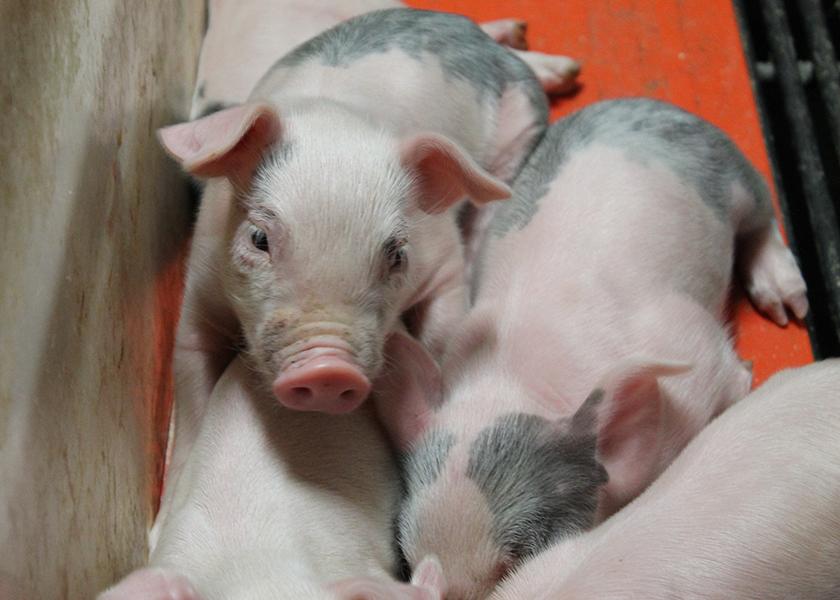Inadequate Iron Supplements Lead to Subclinical Anemia in Young Pigs

A field trial evaluating iron supplementation for baby pigs found the typical 200 mg iron shot at birth is not enough. The trial was prompted by a client who wanted to compare different iron supplementation methods, reported Brittney Scales, DVM, Four Star Veterinary Service in Mexico, Ind., to Pig Health Today.
Using a handheld device called a HemoCue, Scales was able to easily test pig hemoglobin levels during the trial. The device identified subclinical anemia in pigs that were not exhibiting signs of anemia.
“A lot of farmers think if they don’t have pale pigs, then they don’t have a problem with anemia,” Scales said. “We just take an ear prick [with HemoCue] and get a blood sample really quick…and actually have a concrete number to show [the producers] that their pigs are subclinically anemic.”
Field trial results
The three iron-supplement treatment groups used in the field trial include:
- One 200 mg iron shot at day 1
- One 100 mg iron shot at day 1 and a second 100 mg shot at day 10
- One 200 mg iron shot at day 1 and oral iron 7 days pre-weaning
The best outcome came from the 200 mg iron shot followed by oral iron, a protocol her client requested. However, Scales prefers to use a second 200 mg shot at 10 days of age.
“We’re finding in a lot of research that two 200 mg injections are best…with over 70% of the pigs in the optimal range of hemoglobin,” she explained.
The protocol producing the worst outcome was the one 200 mg shot with no iron follow-up. The protocol with two 100 mg shots spaced apart did better, with higher levels of iron.
“When you break up that iron, you get better results,” Scales said. “We found if you do two shots of iron, whether that’s 100 mg or at best 200 mg shots twice, that is where we find the best results in pigs.”
Two-shot iron extra labor
“The first shot is typically within the first day or so of age,” she explained. “Depending on how labor is on the farm, we’d like for the follow-up shot to be over a week past the first shot. I think there are producers who still do just one shot because of labor costs and not having enough labor to pick up those pigs the next time.”
The cost of not following up with the later, second shot may be more expensive than previously thought.
“When the piglet’s blood is low in iron, the red blood cells do not do as well carrying oxygen throughout the body,” Scales said. Adequate levels of iron are required to optimize growth and support a healthy immune system. This means downstream, these subclinically anemic pigs will have lower weights and lower average daily gain than pigs that are not anemic.
“It’s a very costly, well-hidden problem that we don’t even recognize,” she added.
More from Farm Journal's PORK:







